Rachelle Ayala's Blog, page 82
September 13, 2012
Do You Have to Have Great #Sex to Write Great #Love Scenes?
Love scenes! Ah, when the romance gets hot, and the characters can't help themselves, how does an author send them over the edge?
Do you have to have great sex to write great love scenes?
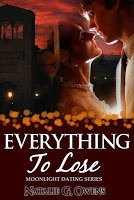
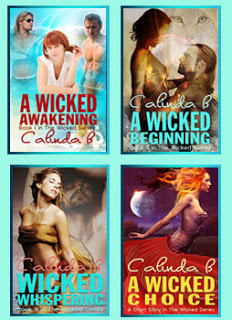
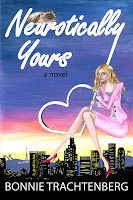
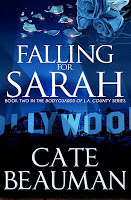
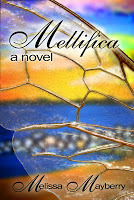
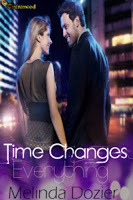
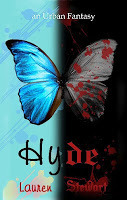
Be sure to check out these books on the Sexy Writers Listmania List at Amazon!
Do you have to have great sex to write great love scenes?
I can't say it doesn't help. Besides, it's so much fun when you have a partner to experiment with. There are some things that just have to be experienced: the combination of visceral feelings and emotions can't be duplicated by a how-to manual. That said, imagination takes off and melds with the individual personas of the characters in a scene. Writing love scenes from both the male and the female point of view requires deep immersion into the character, and once I'm lost in them, the scenes come easily.
Rachelle Ayala, crazy owner of this blog, author of Broken Build, available at Amazon
Yes. My feeling is experience is the best teacher. You can read the 'instruction manuals' (for lack of a better description) all day long, but nothing takes the place of actually experiencing, participating in the real deal.
Melisa Williams, upcoming author of Going Native

I think that what makes a great love scene - one that arouses all the senses - is the lead in to the sex, not the sex itself. You could call it foreplay - it's the part that messes with a reader's head and emotions :). How is the interaction constructed between the lovers? How does their connection evolve toward ultimate fulfillment? I think that by the time the down and dirty sex act is warranted, the readers should have already experienced a roller coaster of emotions, so that whether the sex is explicit or not, they don't feel cheated.
Natalie G. Owens, author of Everything to Lose, available at Amazon.
As a writer of erotica I'm often asked if my steamy scenes come from real life inspiration. While having great sex in real life can provide incentive to writing a great love scene, it's not a requirement. People forget that a writer's most powerful weapon is imagination. I read, and often write, to escape. Sex in romance novels and erotica tends to be larger than life–as it should be. No one wants to read about the real life challenges of couples as they try to juggle mundane responsibilities. Most authors writing erotica aren't dominatrixes or sex workers. They are regular people with normal constraints on their time, kids, etc. I never assume that a horror writer runs around murdering people for inspiration. Fantasy is what makes fiction so wonderful. Writing allows us to carve out whatever our imaginations desire. That being said, I do believe that passionate, open minded and sexually curious folks do write better love scenes. Cheers.
Narcisse Navarre
LOL. I just love these questions of yours! Okay - sexy writers - that's me ;-) I think you have to have great sex on the BRAIN to write great love scenes. It all starts there, otherwise love scenes can become stilted and lifeless, unimaginative, forced, etc. You have to have imagination, otherwise all of your characters and everybody else's characters are doing the same things. What's the fun in that? We live in a world where too often, everyone thinks they have to conform, even in the bedroom. I've noticed lately, too many people thinking they have to shave all over, or perform specific sexual acts because it's the norm, or it's expected. NO, no, no! Your personality and your individual desires make love scenes real. I just read a wonderfully character-driven, unique love scene in "Soul Weaver" by Kym Grosso. Refreshing! A big part of being sexy and writing sexy is allowing yourself and your characters to be individuals. Sex is, afterall, a mind thing.
Dariel Raye, author of the Dark Sentinel Series, available at Amazon.
Boy, Rachelle, you sure know how to ask the probing questions! I think to write good love scenes, you need to have a basic understanding of the mechanics of sex, just so you don't have characters doing impossible things. Beyond that, imagination is all anyone needs to describe their perfect fantasy! And that's all romantic love scenes are, right? Fantasy?
Chantel Rhondeau, author of Always and Forever, available on Amazon.

Absolutely not. But each writer and reader is different. I love reading a juicy, descriptive, sexy love scene and feel like something is missing if the writing isn’t somewhat explicit. I’ve explored a lot in my day to be able to embrace the fabulously committed and loving partnership I have with my sweetie pie. Hence, when I write, I aim for enough descriptive qualities to get both me and my readers stoked. Lately, I’ve been experimenting with suggestive dialogue between my characters – it hints at what is simmering beneath the surface in what I hope is a most delightful manner. But again – to each his or her own. The spectrum for sexual preferences is wide. I’m only going for the slice of the pie that appeals to me and my readers – one that sizzles in a loving way.
Calinda B, Author of the Wicked Series
"My reply to that would be that it takes a vivid imagination to write a good love scene. Plus a definite sense of the dramatic.I still remember a show I saw online called, "So You Wanna Be a Soap Star?" One week they were doing love scenes, and to this day I remember the career actor telling a contestant, "There's no such thing as vanilla sex in soap operas."
And that is the philosophy I use in all my sex scenes.
Each sex scene I write has to have its own tone, according to the context of the scene, the people involved, and of course the chemistry between the characters.
It also takes a measure of patience and a little bit of choreography. :-)"
Jon Bradbury, male erotica author

Not in my opinion. You may have to have great sex to write great sex scenes, though! When it comes to writing love scenes, what's more important is knowing what it feels like to fall in love and being able to recreate the tension, the excitement and the chemistry between the characters. Both characters need to be very appealing, and it's best if you can make readers root for them to be together despite any conflicts or hurdles.
Bonnie Trachtenberg, author of Wedlocked and Neurotically Yours

The answer is a big no. The love scenes I create as a writer have nothing to do with me personally. I'm just a conduit to the page. Each scene written is about the characters of the story and the chemistry the couples create together. Sometimes the loving is slow and sensual, at other times fast and frantic. It really depends on the story itself and what each character brings to the table. Every word written must be authentic to who they are.
Cate Beauman, upcoming author of the Bodyguards of L.A. County Series

My ego demands that I claim to have great sex and that I write great sex scenes. While I’m speaking for that side of me, I have a great butt, look like a twenty year old and sing like Celine Dion. Now, outside of my fantasy, I realize that there are many reasons to have sex and regardless of the acts performed, the motivation behind the deed determines the greatness. Did the characters just meet in a bar to hook up? Or have they had a passion between them since the moment they laid eyes on each other and are aching for the moment they can show their love and be a part of each other? Maybe I’m just a romantic, but I think most adults have had that feeling in their lives whether or not they’ve had sex. If a writer can translate that feeling to page, to me that is a great love scene.
Melissa Mayberry, author of Mellifica: Devastating First Love, available at Amazon
Ah. I think not. I'd have to agree it helps, but I can't say that would be the only qualifier. You know the old saying 'Pictures are worth a thousand words'? Visuals create ideas inside of our minds. They capture the essence of the moment and, well, stimulate endorphins and permeate desire. If it were all about having great sex, then why would we need to read about it? I think written sex scenes are descriptions of how we'd certainly want it to be. Always sizzling hot sensations that go on and on. A mate who never disappoints, who knows all those hot spots, and never EVER fails to explore them.
Melisa Hamling, author of Twenty Weeks, available at Amazon
I think having sex or (if you're older having HAD great sex ) can help enormously. Yes, you can leave a lot to your imagination but touching, tasting and feeling the real thing must be paramount. After all a little bit often goes a long way...
Faith Mortimer, author of Harvest

I love this question! My husband would love to say yes to this and to some point I have to agree. Although, my characters tend to be different than I am and more experimental, I live precariously through them. Once I write a great scene, I dare to say that my evening is a lot more exciting! :)
Melinda Dozier, upcoming author of Time Changes Everything, to be released on June 3, 2013

Not at all. And sadly, I know this from personal experience. But no one wants to hear about that, now do they? Thankfully, a writer’s job is to use our imagination. Sure, there might be a bit of life experience in there as well—the great and not-as-great experiences. But love/sex scenes are primarily about what women want men to say or do. You know, the kinds of things that don’t always happen in ‘real life’ anyway. Certainly not for all of us. But we all can appreciate the fantasy, that moment when two people connect for the first time and everything becomes right in the world.Which author do you agree with? Comment below.
Lauren Stewart, author of Hyde, an Urban Fantasy, available at Amazon
Be sure to check out these books on the Sexy Writers Listmania List at Amazon!
Published on September 13, 2012 00:00
September 12, 2012
#BookChat Pull of Gravity by Cherie Reich
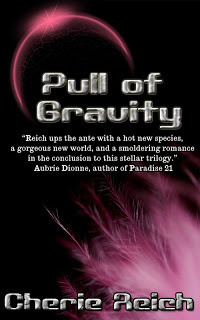
Synopsis: A space fantasy novella
A no-nonsense Earthling corporal, Nike accepts a mission to destroy the winged-people of Cupidis to give her species a new home planet.
A spoiled Cupidian prince, Edonys gets whatever he wants until his dying father tells him he must choose a mate and take his rightful place as king.
Nike and her reconnaissance crew's space cruiser lands upon Cupidis, and they are taken to the royal palace. The king's decline leads her to believe Mission: Conquest will be easy. Edonys refuses his father's last request to fall in love, but Nike isn't anyone. She's bold and different than any Cupidian female. As Nike and Edonys's quests intertwine, an Earthling and a Cupidian will find it easier to ignore the pull of gravity than the pull of love.
From the Author: Although this is book three of the Gravity trilogy, Pull of Gravity is a stand-alone novella. I wrote book one, Defying Gravity, back in December 2009, and I never thought I would have more than one story from it, but I’m pleased how the ideas came to me over time for Fighting Gravity (by far the hardest one to write) and Pull of Gravity. This one was the most fun of the trilogy to write, especially since I got to imagine these hot angel-like aliens and a beautiful planet. Also, this trilogy is a mixture of genres: fantasy, science fiction, and romance.
What Readers Are Saying: “Reich ups the ante with a hot new species, a gorgeous new world, and a smoldering romance in the conclusion to this stellar trilogy.”
“Cherie outdid herself with the final novella in the series. Goodness knows I couldn’t resist the pull of her incredible storytelling!”
Behind the Scenes: When I published Defying Gravity, I had planned to write and publish Fighting Gravity and Pull of Gravity, but I almost didn’t continue with the series. Yet I pushed through and am glad I did. Pull of Gravity in a lot of ways was easier to write, since I had these clear characters and their story in my head, but some things still surprised me, particularly concerning Edonys’s mother.
To purchase for $0.99: Amazon US / UK / DE / FR / ES / IT Smashwords Nook KoboiTunes
To add on Goodreads.
Author Bio: Cherie Reich is a writer, freelance editor, book blogger, and library assistant. She enjoys writing horror, fantasy, and mysteries, but she doesn't let that stop her from trying other genres. Her short stories have appeared in magazines and anthologies, and her e-books include the horror novelette Once Upon a December Nightmare, the fantasy series The Foxwick Chronicles, and the space fantasy trilogy Gravity. She is a member of the Virginia Writers Club and Valley Writers and placed third in Roanoke Valley's BIG READ writing contest.
Cherie's Amazon Author Page

Website: http://cheriereich.webs.comBlog: http://cheriereich.blogspot.comTwitter: https://www.twitter.com/bookworm0753Facebook: https://www.facebook.com/authorcheriereich
Published on September 12, 2012 00:00
September 11, 2012
Cover Reveal: Monique Morgan's Rise of the infected
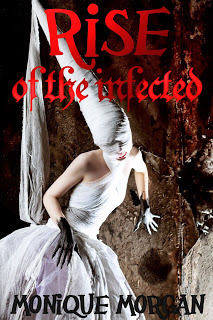 Releases October 31st
Releases October 31stRiver Black lives in a world where only the strong survive. The earth has changed to a brutal climate and the survivors will do anything to live. The eastern continents unleash a biochemical weapon on their enemies, and directly onto River’s world. She will have to leave her quiet existence in the forest and venture to the slaver fortress and further beyond, into the deepest part of the surviving cities. If she doesn’t die first, or rise infected…
Excerpt:
Aspen was the first to speak, all of us still slightly in shock at what we had just witnessed.“We have to clear out the house. I don’t know if all of them left, or if some of them got in, but we have to know for sure,” he said, the urgency in his voice clear.“I’ll take upstairs,” I responded immediately, wanting to get a familiar perch from above, and recalculate our current situation. The fire still burned in the pit in the entryway, illuminating the three of us as I walked up the curved stairs. I quickly lost sight of them, the wall turning smoothly into a hall. The hallway was covered in shadows, the dying embers of fire pits casting light through the open doors of the rooms.“Hello,” I called out weakly. I didn’t like the idea of going blindly into each room, possibly ambushed at any moment. It would be better to draw them out into the hall, and cut them down as they ran towards me.I waited, my body tense and fluid at the same time, ready to spring if needed. But nothing came. I spoke louder a second time, my ears straining as my voice traveled down the hall. Once again nothing came out of the rooms and I walked forward, entering each one and searching every corner, my rifle always ready.A few were bedrooms, which I frowned upon. It was a bad omen to have bedrooms aboveground. It was obvious that the townspeople had become lazy. I entered one more room that was a study, a desk crammed into the corner, covered in books. Even in the most stressful situation, I found myself becoming excited at the plethora of reading material that was before me. It was rare to see onebook, let alone dozens. The last thing in the hallway was the stairs leading to the final floor. Once again I walked the smooth curve of the stairwell, the stone giving off a sense of protection, although it would do nothing to help me if I was attacked by the infected.It was dark down the long hallway, only one room at the far end giving any light, the rest of the doors closed. Once again I called out and waited, keeping my eyes on the farthest room. I was greeted only by the sound of my own voice.Taking a breath, I pushed open the closest door, holding my gun out in front of me. I knew the moment I stepped in the room that I was not alone, there was a presence in the room, a presence in turmoil. I could almost hear the chaotic thoughts, trapped and angry. I knew when I heard the low animalistic growl, that I had walked into the room of one of the infected.My shoes slipped on the floor as I walked towards the sound, a trail of blood beneath me, as though someone had dragged themselves to the door and shut it. I walked around the bed towards the continued hissing, expecting the creature to come sprinting at me. But it remained in the corner. I walked closer, and finally saw white gleaming eyes as it stared at me, a hideous grin on its face.It was a woman, or what was left of a woman.These rooms were bare compared to the extravagant rooms below. I could only imagine the ones belowground. Logic would say that they belonged to servants, possibly even slaves. It was clear that even with the thick window covering the rooms would quickly get hot during the extreme heat. It would be torturous to be forced to live up here. On a beautiful day like this, they had all probably had their windows open, the first to succumb to the plague that had been dropped upon us. I almost tripped over the two severed legs that were littered on the floor. It looked like someone had taken an axe to them, and the brutality of the scene shocked me. Instead of dying, the woman’s wounds had almost healed, the blood stopping its flow.The growling increased as the woman dragged herself by her arms towards me. Her mouth had started the rabid chomping that seemed a telltale trait of the infected. Bloody fingers reached for me, just as I lifted the rifle once again and placed it to the woman’s temple, pulling the trigger with a quickly flick of my finger. I took a closer look at the carnage around me, the bloody legs and the limp body of the infected woman. “Yup, looks like a Zombie to me.”I wiped the blood from my boots in the hallway, leaving a creepy trail of red footprints. There was one more room before the open one at the end, and my hairs rose as I pushed open the next door. I was greeted by silence, the room empty. Even the shutters were closed, and from the dust on the furniture I could tell it had been some time since anyone had been here.I moved back out into the hall and walked towards the last room, the light was not coming from a burning pit but from an open window, the sun shining into the room. My trigger finger tensed once again, concentrating on everything in front of me. The first thing I saw was the bed, covered in blood. Another servant was there, axe marks evident on her body.But this one was clearly dead, its head lying a few feet from the body.“I doubt you will be getting up,” I said, and that’s when I realized there was someone else in the room. It was another woman, her hair dark and her clothes fine. She was not some servant, but a mistress of the house. She was young, not much older than I was, and she carried an axe that dripped blood onto the floor as she stared at me.
Look for Rise of the Infected
October 31st2012
To learn more about the author visit moniquemorgan.com
Enter her Rafflecopter giveaway
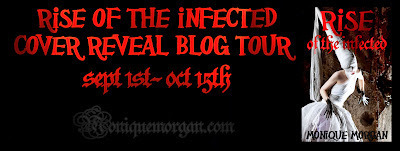
Welcome to the reality of River Black
River Black lives in a world where only the strong survive. The earth has changed to a brutal climate and the survivors will do anything to live. The eastern continents unleash a biochemical weapon on their enemies, and directly onto River’s world. She will have to leave her quiet existence in the forest and venture to the slaver fortress and further beyond, into the deepest part of the surviving cities. If she doesn’t die first, or rise infected…
Here is a chance to win signed swag and a free e-copy of Rise of the Infected. A special thank you goes out to all the blogs participating in the Cover Reveal Blog Tour. Rise will be released October 31st2012. The Giveaway
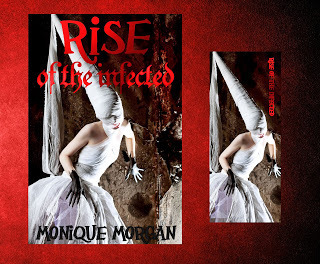
Win signed Rise of the Infected swag: signed cover photo and signed bookmark
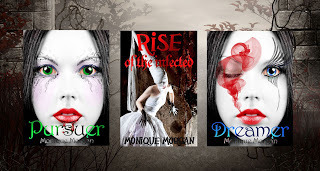
Win signed cover photos of all of Monique Morgan’s books: Pursuer, Dreamer, and Rise of the Infected.
 Win a e-copy of Rise of the Infected when it is released October 31st 2012, and all signed swag!Enter Now
Win a e-copy of Rise of the Infected when it is released October 31st 2012, and all signed swag!Enter Nowa Rafflecopter giveaway
Published on September 11, 2012 00:00
September 10, 2012
#AuthorInterview Gary Frazier #AwardWinning #Author of DEATH ON THE WOLF #LiteraryFiction
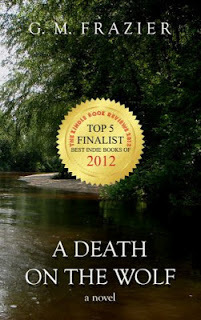
Today, I'm proud to interview G.M. Frazier, author of the award winning A Death on the Wolf , a Top-5 finalist at the Kindle Book Review for Literary Fiction. The story takes place in 1969 and follows a teenage protagonist while he learns over the course of a single summer the true meaning of friendship, commitment, love, and sacrifice.
The late sixties were a turbulent time in U.S. history. How much research did you do for A Death on the Wolf?
I’m a stickler for trying to get the details right, so I always do quite a bit of research. For example, if I have a character watching TV on a Wednesday night at a certain time, I try to make sure the show he’s watching actually came on that night at that time in 1969. The Internet is invaluable for doing that sort of research. As for the political and social turmoil of the late 1960s, that really doesn’t play much of a role in my novel. The Vietnam War is mentioned (one of my characters lost a spouse in the war), as is the election of 1964. But since the story is set in rural Mississippi, the characters, especially the teenaged protagonist, would only be exposed to the riots and whatnot on the evening news.
Do you write primarily with a male protagonist from a male point of view? Do you have scenes from a female point of view tucked in your books?
With the exception of my first novel, Summer Solstice, all of my novels and short stories are in the first person and told from the point of view of a male protagonist. The story in Summer Solstice is told in third person omniscient and there are numerous scenes written from the point of view of a female character.
How do you define literary fiction?
Justice Potter Stewart, in a famous 1960s Supreme Court case on pornography, stated that he could not attempt to define what constituted pornography, but he knew it when he saw it. I tend to think of “literary fiction” the same way. It’s hard to define, but I know it when I read it. To the extent I would attempt a definition, I believe literary fiction to be works that have enduring themes that transcend not only the era in which they are written, but also the era in which they are set. These novels tend to be character driven rather than plot driven, though not at the expense of plot.
Why do you think people read coming-of-age fiction?
I believe most people can think back to a pivotal moment in their teenage years when they recognized that the world had changed because their perception of it had changed. For whatever reason, whether it be a traumatic event or just the plodding progression of growing into a young adult, we can all think back to a point where we shed the naiveté of childhood and began to see the world and our place in it unfiltered and unvarnished. The unbridled optimism of childhood is still there, but the realty of adulthood, and what it means to be an adult, begins to rein it in. It’s an exciting time full of dichotomies. Coming of age stories have appeal because they bring the reader back to that time.
What is the significance of your title? Is there literally a death and a wolf, or is it symbolic, and how so?
The title has both a literal and symbolic meaning. The opening sentence of the story is “The summer I turned sixteen I shot a man.” The reader knows from the start that something bad is going to happen to this boy over the course of his summer. The symbolic death is the death of his childhood, his coming of age.
Thank you! I agree with you on the impulse of reading coming-of-age stories. I often wonder how others "grew up" and what experiences they had. Congratulations on being chosen as a Finalist, and I wish you the best for your writing career.
Death On The Wolf is available from Amazon.
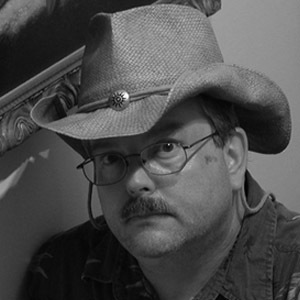
Published on September 10, 2012 15:26
Using Life Experiences (Part 1) by Morgan St. James #GuestPost #writertip
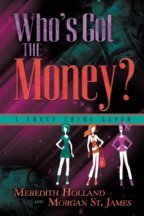 Morgan St. James is an award winning multi-published author, speaker and columnist. She has written over 500 published articles relative to the craft of writing and people in the industry, as well as the book Writers’ Tricks of the Trade: 39 Things You Need to Know About the ABCs of Writing Fiction.
Morgan St. James is an award winning multi-published author, speaker and columnist. She has written over 500 published articles relative to the craft of writing and people in the industry, as well as the book Writers’ Tricks of the Trade: 39 Things You Need to Know About the ABCs of Writing Fiction. Today and tomorrow, she shares with us her tips on using Real Life Experiences in your writing.
How to relate life experiences to your writingEven if you feel as though there was nothing really special about your journey along the path of life, you would be surprised at the treasures you can find if you open your mind and explore. Life experiences and emotions are priceless when writing fiction, creative non-fiction and yes, memoirs even if there is no story that seems worthy of a book. Two perfect examples of captivating memoirs from ordinary women are “Dancingin My Nightgown: The Rhythms of Widowhood,” by Betty Auchard and “CanWe Come In and Laugh, Too?” by Rosetta Schwartz, my mother.
Betty, married to the love of her life for many years, depended upon him for everything. Now she has to learn to cope after he dies, and it wasn’t easy. She takes you through the steps of emerging as an independent woman after years of being half of a couple, deftly telling the tale of her struggles and triumphs. A story many women can relate to. Rosetta, who was born in 1909, tells of being the youngest in a zany family of ten children when the world was so different. She takes you all the way through to 1989 when, at the age of 80, she wrote her story. Rosetta, too, faced challenges in life and always depended upon what she learned as a child growing up in a family with more laughter than money. The title of her book says it all. The neighbors always used to knock on the door and ask if they could come in and laugh too. She looked at bumps in the road with laughter and taught her whole family to do the same. She inspired people to believe in themselves.
Then there are memoirs like “TheButterfly Garden: Surviving Life on the Run with One of America’s Most Wanted,”by Chip St. Clair, the horrific story of growing up in total fear. As a boy, he never knew what would set his father off--maybe the ice cubes had melted in his glass of Tab, maybe dinner was overcooked or undercooked or the gravy was too runny. Regardless, the beatings always came. As did the twisted games of cat and mouse--being thrown from a rowboat into frigid Lake Michigan, the middle-of-the-night moves to different states, or being left to dangle over a ten-story balcony while his father watched from inside. Somehow he tells it all in a way you can understand right through to the point where as an adult he becomes an advocate for abused children.
ONE OF THE MOST IMPORTANT QUALITIES A FICTIONAL CHARACTER CAN POSSESS IS TO SEEM REAL TO THE READER. Keeping this in mind, your own experiences can be used to breathe reality into fictional characters. Forget just stringing together a series of words describing physical attributes and how the character carries out routine or off-the-chart situations—perhaps spiced with inner thoughts. There is more to creating someone with feelings and emotions and a physical presence. Doing that doesn’t have to be daunting. The reader sees events through the eyes of these players in the story, so at all costs avoid moving paper dolls or overblown figures through the scenes. Here is where the advice, ‘draw from what you know,’ comes into play.
PUTTING LIFE INTO PHYSICAL DESCRIPTIONSThis is a place where adjectives, adverbs, similes and metaphors are your friends as long as they aren’t overused. Sprinkling them in the right places sparks the reader’s imagination. It allows them to draw parallels to familiar images and see them in their mind’s eye. Overuse them, however, and it minimizes everything. Why? Because with each new spouting of a simile, metaphor or more adjectives or adverbs than should ever be huddled together in the same sentence, the reader begins wonder how many more of these they can endure.
TAP INTO YOUR OWN IMPRESSIONS RATHER THAN CLICHÉSTo avoid clichés, reach into your own experiences and picture things that impressed you. Put the image into words and apply it to something about your character. For example, the woman had shining blonde hair. If it was straight, did it just hang there or shimmer like a golden shawl? Why would I choose the simile of a golden shawl for this example? Because I pictured a former business partner and friend who had hair like that. I could never look at her without thinking of a golden silk shawl. Let’s say the hair isn’t straight, but curly. Is it in tight ringlets perhaps described as coiled little ringlets like the fur on a pampered poodle? Maybe this blonde hair undulates in luxurious waves reminiscent of waves kissed by the glow of the sun as they push toward shore. In each of these examples we picture a different person. And, every reader will have their unique vision of that person. Simply saying “her straight blonde hair” or “curly blonde hair” would never launch imagination in the same way.
CREATING YOUR OWN REFERENCE FILE
 So often these images are fleeting, triggered by something someone said, something we remembered or saw, but even with Herculean effort, we can’t pull them back when we need them. They lurk right at the edge of recognition, then slip away. One way to capture them is to keep a log. When an image like that pops into your mind, distinct images and emotions ride on their coattails, leaving you with a describable impression. Reach for the little spiral notebook—we all should have one of those—and flip to the section you’ve set aside for just such visions. Using the same example as above, assume you imagined hair badly in need of care. Maybe you would jot down: her blonde hair reminded me of a field of hay long past the time it should have been harvested.
So often these images are fleeting, triggered by something someone said, something we remembered or saw, but even with Herculean effort, we can’t pull them back when we need them. They lurk right at the edge of recognition, then slip away. One way to capture them is to keep a log. When an image like that pops into your mind, distinct images and emotions ride on their coattails, leaving you with a describable impression. Reach for the little spiral notebook—we all should have one of those—and flip to the section you’ve set aside for just such visions. Using the same example as above, assume you imagined hair badly in need of care. Maybe you would jot down: her blonde hair reminded me of a field of hay long past the time it should have been harvested.
Morgan has recently published: The Mafia Funeral and Other Short Stories Vanishing Act in Vegas – The third silver sisters mystery Who's Got the Money? Writers Tricks of the Trade: 39 Things You Need to Know About the ABCs of Writing Fiction
What are some of the life experiences you've written about? read about? Were the scenes more realistic because of your personal experience? Leave a question for Morgan in the comment section, and come back Friday for Part II.
Published on September 10, 2012 00:00
September 9, 2012
#BookChat Kathleen's Cariole Ride by Margaret Kell Virany
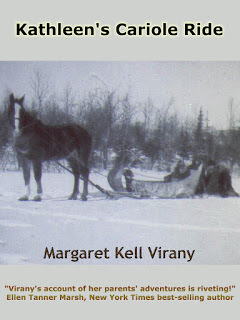
SynopsisCanadian sailor and farm boy Jack Kell attends Sunday School in Portsmouth, England, in 1917 during World War I and the teacher, a City Councillor, invites him home for tea with his family of a wife, son and two daughters. When the war ends, the younger daughter writes to him until she marries an Australian. Fearing spinsterhood since most eligible Englishmen have died, including her fiancé, Kathleen takes up her sister's correspondence. Back in Toronto, Jack has finished university and theology school, been ordained as a minister and is packing to go to far-northern Manitoba to take a job attending to the spiritual needs of the Swampy Cree on the Oxford House reserve. Kathleen's letter is like manna from heaven and he proposes right off the bat. She feigns surprise and asks him to come over for another look (it's been nine years) and he manages to squeeze in the trip. However, she gets nervous and rejects him dramatically. All he can salvage is a promise that they will write for a year before her 'No' is final. Seventy-two onionskin letters log a total of 200,000 miles between fog and bog, which were civilizations apart, as Cupid tried to make his will prevail.What happens the next time Kathleen asks Jack to cross the pond leads her to take a daring leap into a preposterous life she could never have dreamt she would live.
Why I Wrote This Book
1) It's a heartwarming love story which has always been part of me. I felt passionate and wanted to share it with others.2) My parents left behind 72 awesome love letters, many journals and photos. They never said anything, but when I looked at these materials after they died I had the feeling somebody was trying to put me up to something.3) I had years of writing experience (mostly as editor/co-owner of a weekly newspaper), plus a degree from the University of Toronto in English Language & Literature. I wanted to write a book, and was sure I could, if I just could find something to write about. In this case I didn't have to dream up universal themes, structure, plot, characters, ideals and settings. They were all there in the way my parents had lived their lives. 4) My ambition was to write a family memoir to the best of my ability.It would emulate classical standards and be aimed at a target audience of "all people of all time".
What I Want Readers to Get out of It
1) Incongruity. My parents were an unlikely pair. Kathleen Ward was a city councillor's daughter from Portsmouth, England (pop. 190,000), and Jack (John Ambrose Campbell) Kell from Cookstown, Ontario (pop. 550, not counting the pigs, horses and cows) was a farmer's son. They were plunked together by a horrific conflict.
2) Adventure. They did daring, unique things at an interesting time in history (the roaring 20's). They crossed paths with princes, prime ministers and Aboriginals.It took 10 days each way to cross the Atlantic Ocean. Their letters went by steamboat, train, canoe, dog team, horse toboggan, bush plane and foot (moccasin). Future Canadian Prime Minister/Nobel Peace prizewinner Lester Pearson taught my father when he was getting his MA in history.The Prince of Wales was a friend of my grandfather's and wrote him a personal letter. Charles Lindbergh, prohibition, the new inventions of radio and telephone, and the fairly recent ones of automobile, electricity and telegraph touched them. They flew across the English Channel, 17 years after Louis Berliot did it for the first time.3) History. It's a firsthand account of what went on between missionaries and natives on an Indian reserve -- a story that has often been neglected and not reached the general public in a well informed way been. My mother's unique experiences included being pulled by a horse drawn cariole 180 miles in late January when the temperature was -30F to have a baby in a hospital, and beiing paddled up the old fur trade route leading to Hudson Bay.8) Love Story. t's an epic love story in the knight-and-lady courtly tradition. Just about all my parents had in common when they met was that they had read the same books (good, classical ones and the Bible). Texting in those days meant you lived by a text. They honestly tried to behave well, they stuck to their marriage vows, were best friends and rescued each other when they got into trouble. They knew how lovers behaved in great tragedies and comedies. Theirs was a comedy. They were together for over 60 years and died natural deaths at over age 90 (my father died in my mother's arms).
Behind the Scenes
1) This is the second book I've written about my parents. Kathleen's Cariole Ride (Kindle book, 2011) is the love story and pictures from the most romantic part of their lives and the time spent living on the Indian Reserve in Oxford House, Manitoba.In 2011. My earlier book, A Book of Kells: Growing Up in an Ego Void, covers their whole lives, has more Kell family information and tells my faltering story of trying be a selfless example as the third of three "perfect" minister's daughters. 2) The title word "cariole" refers to a very ancient conveyance invented by Aboriginals in Alaska. They called it a "nubougidan" and that's where our word "toboggan" comes from. It is bigger than a normal toboggan and has canvas sides, a back rest and a storage area behind it. French Canadians missionaries in the 17th century called it a "cariole" and the Cree adopted that word.. It was the equivalent of a limousine, used for special occasions and as a hearse. My mother is seated on one in the cover picture.3) My father was an ordained minister of the United Church of Canada. It was formed in 1925 when Methodists, Congregationalists and most Presbyterians in Canada merged. The Oxford House mission had been founded by Methodists. The church my father was raised in was Methodist and so was the church my mother's family attended in the UK.
Two Sample Reviews from My Amazon Catalog Page
"It is a beautiful love story, quick read and meaningful pictures that really capture your heart. I'm not familiar with the Canadian landscape, but this makes me want to research more!"Stephanie Brown Aquino, San Dimas, CA
"This book on the author's parents and their short sojourn in Northern Canada 90 years ago breathes life into a picture of native relations, missionary fever, and northern living some 90 years ago. I found the story to be captivating and enjoyable - the story line is clear and focused, and it is written with a sense of excitement and involvement that captures the reader's attention. The fact that the author is writing a brief history of her own parents in rough living conditions and with a different set of cultures show how much the background of our north has changed in less than a century."Robert Brown, Toronto, ON, Canada
Margaret's Cariole Ride is available on Amazon.
Published on September 09, 2012 00:00
September 8, 2012
#AuthorInterview Michelle Wareham and her new release: Leatherback
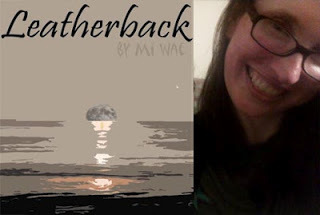
Hi Michelle, glad to have you on my blog. I hear you have a new book titled Leatherback out and it's free today. What's Leatherback about?
Well, it's about a woman who sees a leatherback turtle nest on the coast of Wales and while experts don't believe her, a story of survival, travel, betrayal, nature and family unfold.
Why wouldn't experts believe a turtle would make a nest in Wales?
Leatherback turtles nest in the Caribbean, Africa, the US - warmer climates - in real life... this book toys with the idea that the climates are changing so a weird thing might happen like a turtle nesting in the most unlikely place, like Wales!
Oh, so the appearance of these turtles is unusual then. What does Margarethe (the name of the lead character) remember when she is preparing the beach for the hatching of the turtles?
Yeah, Margarethe reminisces her childhood, growing up and her life in London before her holiday in Wales... it all comes to a head...
Life on the beach isn't so simple either: a lot of characters enter the place, she's not totally alone.
The beach is a beautiful place, especially in the early morning hours. How important was imagery in the book?
I think the imagery that formed when writing it ended up giving it its meaning.
So about you then. How did you get into fiction writing?
I am pretty much the typical story of enjoying Creative Writing when I was 8. I remember writing a heap of unusual stories about my favourite toy being locked out in the cold or what living in a charity bin would be like. It was a sad day when I got too "old" to write stories for school but a lot of fantastic books to read were introduced: Salinger, Fitzgerald, Plath, Heller.. the list go on and the love of reading stays for life.
But in the name of love for writing, I was first published for a magazine (in Perth Australia where I'm from) at 19, then became a published music reviewer/interviewer for years after that, then moved to London and brought my music writing to the rags and net over here, became a science writer, and then started writing fiction again - like originally planned...
Ah, an Aussie. Nice. So how did Leatherback come about?
I was a fulltime science writer at the time and I was looking for a field of science I would enjoy, and after toying with the idea of cell biology, technology I just surrendered to the popular field of marine biology... and being West Australian it was easy to think of nature playing a central role.
Yes, so much variation in animals and plants there. Do you have any advice for writers just starting out?
Sure, it is a long slog writing a full novel so if you are to invest this time make sure you are writing about something you would enjoy and want to tend to over the years that it will demand. Yes, write about what you know but if that fails write about something you really would love to know.
You speak about having Multiple Sclerosis in the introduction to the book, how has that been a hindrance?
Yeah, I was diagnosed with MS in 2006 and I was working for an engineering charity (writing science news) in London at the time. In those early days MS wasn't so much of a hindrance to writing, although I had MS fatigue to contend with, but it really gave me the kick to write that novel as soon as possible in case the MS progressed (as it does)... so I wrote Leatherback in 2008 before my MS progressed and am selling it now that I'm too ill to work.
Any plans to write in the future anyway?
I do have plans and although the MS fatigue is heavier than ever before I am using the glimmers of a productive state to get some writing down. The glimmers might only be an hour a day, only a couple of times a week but if I can get a story down, I will be doing so... just slowly...
Slowly, but surely. I admire your determination. So, in the meantime Leatherback is out and self-published?
Yep, I'm so proud of it. I am so thankful I have Leatherback out there and the feedback I'm getting is so positive.
Amazon is promoting Leatherback for free between September 8 to September 12, 2012. Pick up your copy today! Please leave a comment for Michelle if you downloaded it. She'd love to hear your feedback.
Blog Twitter (book): @leatherback_ebk Twitter (author): @MMmmwa Facebook USAmazon UKAmazon
Published on September 08, 2012 00:00
September 7, 2012
Confessions of a Pantster #writertip
 Honestly, I'm a Pantster. Some of my best friends are pantsters. I love pantsters, and I'm definitely write-brained, or right brained. My house is a mess, I have disorganization creds since I was a small child. So why am I making a confession now?
Honestly, I'm a Pantster. Some of my best friends are pantsters. I love pantsters, and I'm definitely write-brained, or right brained. My house is a mess, I have disorganization creds since I was a small child. So why am I making a confession now?Panster's still need Plot Points
Huhhh??? Hold on a minute, backtrack. Did you just use the word PLOT???
Well, yes, and let me explain. Every story needs big moments, those spine-tingling, nail-biting, will they or won't they moments. These are the plot points. They hold up a story much like the towers of a suspension bridge. They present excitement, dilemmas, points of no return, and other tests to keep the story moving and the reader engaged.
 If you look at a profile of a suspension bridge, you'll see that the towers occur roughly at 25% and 75%. For simplicity, we call them the First Plot Point and the Second Plot Point. More flowery terms are Call to Action, Point of No Return, for the first Plot Point, and Dark Moment, Moment of Truth for the Second Plot Point.
If you look at a profile of a suspension bridge, you'll see that the towers occur roughly at 25% and 75%. For simplicity, we call them the First Plot Point and the Second Plot Point. More flowery terms are Call to Action, Point of No Return, for the first Plot Point, and Dark Moment, Moment of Truth for the Second Plot Point.These plot points are not to be confused with the Inciting Incident or hook which occurs before the First Plot Point or the Climax or Final Battle which occurs after the Second Plot point. Rather, the First Plot Point is the end of the beginning and the Second Plot Point is the beginning of the end.
 Larry Brooks has an excellent book Story Engineering,
Larry Brooks has an excellent book Story Engineering, in which he not only explains Plot Points, but also those fascinating little reminders called Pinch Points. His explanations of Story Structure and how they fit with Concept, Character and Theme. He is rather down on panstsing, comparing us to people who won't take an airplane, but rather a five-day train trip. Nevertheless, he does present a workable solution. Think of only five points: Hook, First Plot Point, Mid-Point transition, Second Plot Point, Ending, then wing the rest.
in which he not only explains Plot Points, but also those fascinating little reminders called Pinch Points. His explanations of Story Structure and how they fit with Concept, Character and Theme. He is rather down on panstsing, comparing us to people who won't take an airplane, but rather a five-day train trip. Nevertheless, he does present a workable solution. Think of only five points: Hook, First Plot Point, Mid-Point transition, Second Plot Point, Ending, then wing the rest.So what is this Panster Doing talking Plot Points?
When I wrote my first book, I had no idea where it was going and where I was coming from. I had this story in my mind, a story of a princess with an unsatisfying life, and went exploring. I daydreamed many subplots, took off on wild tangents, and indeed changed my story quite drastically. I hesitate to count how many drafts I wrote, or how many times I subjected my critique partners to yet another plot change.
Plot change. There's that dirty word to the heart of a pantster. We are creative souls, daydreamers, unbound by charts and graphs and mathematical formulas. We write from the heart and there is no telling where the heart will turn.
Yes. That is true. But after fifty iterations of 'As the Heart Turns' a story starts to form. And what transpires is a series of climatic events, character arcs, reversals and victories. The bridge structure takes shape organically. And all of the story engineering points can be identified, in retrospect.
So How does a Pantster Plot?
Very minimally. I participated in NaNoWriMo in November 2011 and spun out a first draft. Right about that time, I saw some tweets with the hashtag #PlotWriMo and started following it. PlotWriMo is Martha Alderson's post-NaNo activity to help all of those pantsters who threw together a first draft to prepare for the first revision. Martha stresses stepping away from the first draft and thinking about the themes of and what she calls re-"visioning." She takes a more holistic approach than Brooks, and encourages you to dwell into the subconscious universal story.
You are encouraged to put away your first draft, not look at it at all, and sketch a series of mountain peaks on a large piece of butcher paper. You write plot elements above the line and character elements below the line. Then you think of your big picture thematic elements. Free association, jot down anything that comes to mind. Match them with your plot points, or what you remember your plot points were. No peeking. She also warns you against letting anyone else read your first draft. It is a fragile thread, a dream. You're also encouraged to think about your characters and sketch their emotional development on tiny postcards, a mini plot with all the points.
Take a look at her book, The Plot Whisperer
 for an explanation of her method. She has also recently published The Plot Whisperer Workbook: Step-by-Step Exercises to Help You Create Compelling Stories
for an explanation of her method. She has also recently published The Plot Whisperer Workbook: Step-by-Step Exercises to Help You Create Compelling Stories .
.



A Pantster who Plots
Both of these systems are fascinating, but I must admit I did not follow it to its entirety. I dropped out of the beat sheet while trying to Story Engineer and threw out all my 3x5" mini plot lines sketched while Plot Whispering. Did I fail?
Not really. Even though I threw away my cards and diagrams and never completed my spreadsheet, doing the exercises helped me to be aware of the hidden messages inside my story. Mulling on the character emotional development also allowed me to deepen my relationship with my characters.
By the time I was set to revise, everything was once again organic, not over-engineered, yet harmonized with the universal story. So that's my confession. I hope it was entertaining or at least helpful. The next book I'm going to read about plotting is Holly Lisle's Create A Plot Clinic
 . If you've read it, let me know what you think.
. If you've read it, let me know what you think.What about you? Are you a Pure Pantster, a Pantster who Plots, a Plotter who Pants (don't get any ideas here), or a Perfect Plotter? What process do you prefer? Story Engineering or Plot Whispering?
Published on September 07, 2012 00:00
September 6, 2012
#BookChat Wedlocked by Bonnie Trachtenberg
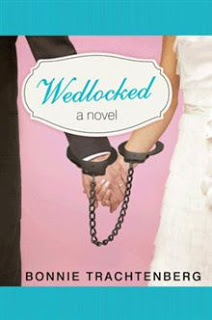
SYNOPSIS:
In this laugh-out-loud romantic comedy inspired by true events, Rebecca Ross, a thirty-six-year-old struggling actress, lets years of disappointment and heartache catapult her into a disastrous marriage to a charismatic man with more than a few surprises up his sleeve. Travel along on their hilarious "honeymoon from hell" in Italy, which soon has Rebecca longing for her miserable days of singlehood. An entertaining and poignant story about second chances, finding love, and most importantly, finding yourself.
FROM THE AUTHOR:
I began writing Wedlocked about a year after escaping from my first brief, disastrous marriage at the age of thirty-six. After fifteen years of dating, desperation took hold and impelled me into a most unlikely union with a very complicated (to put it nicely) man. It was a time in my life that was so absurd and that made such a huge impact, that the story eventually poured out of me. Much of what happens at the "Scary Tale Wedding" and on the "Honeymoon from Hell" actually occurred, much to many readers' amazement. Writing this book was the biggest catharsis of my life.
BEHIND THE SCENES
It's interesting to note that the biggest problem my agent had with my book when she first read it, was that she couldn't figure out why Rebecca would have married Craig. I realized that I had put too much of the real man into the fictional character and that he actually needed to be less horrible. Here's a paragraph about one of the very true things that occurred in my life, but that I removed from the book to make Craig a bit more appealing:
Those actions were further aggravated by inordinately stupid, blatant lies that were so obvious, I was not only frustrated and angered, but also feared I was marrying a moron to boot. Once, after an “intense workout with his trainer,” he returned with his suit smelling of cigar smoke and his breath smelling of beer. He then told me his trainer decided he was doing so well on his program that he nixed his workout and insisted on taking him out to a bar to celebrate. Did he really expect me to buy his load of crap? He was so transparent Stevie Wonder could see right through him.
What Readers Say:
"I laughed out loud at this story. Got a tad teary here and there and I also loved every page I read. Ms. Trachtenberg is a hoot! If you're looking for a gift novel, here it is--give it to yourself first!!" —Nancy Erickson, Cheryl's Book Nook
"I can't quite put my finger on what makes Wedlocked so special. Is it the strong characters…or is it the universal story of trying to live up to other’s expectations while staying true to your own dreams? Whatever it is, Wedlocked is a fun, emotional and intensely satisfying read that I would highly recommend." —Hands and Home
Wedlocked is available at Amazon.
Author Bio:
Bonnie Trachtenberg is the award-winning, bestselling author of Wedlocked: A Novel and Neurotically Yours: A Novel. She writes a monthly relationship and advice column for LoveaHappyEnding.com. Bonnie was senior writer and copy chief at Book-of-the-Month Club and has written seven children’s book adaptations. She has also written for three newspapers and penned countless magazine articles. She lives in New York with her husband, four cats, and a dog.
You can learn more about Bonnie and read her blog.
Read her relationship column
Find her on Facebook: Author Page and Book Page
Follow her on Twitter @writebrainedny
Visit Bonnie's Amazon Author Page

Published on September 06, 2012 00:00
September 5, 2012
#AuthorInterview Wayne Zurl: Big Town Cop Turned #Mystery Writer
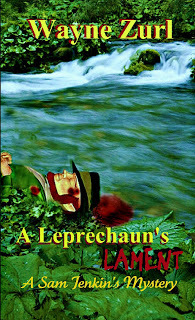 Today, I have the pleasure of having Wayne Zurl tell us about his works. He is a former police officer from the Big Apple transplanted to the green hills of Tennessee. He writes police mysteries and suspense.
Today, I have the pleasure of having Wayne Zurl tell us about his works. He is a former police officer from the Big Apple transplanted to the green hills of Tennessee. He writes police mysteries and suspense.Wayne, tell us about your books and what you like to write?
In 2006, I read the first of Robert B Parker
 's Jesse Stone novels, Night Passage. Stone was an ex-LAPD detective who became a police chief in a small town in Massachussetts. I was an ex-New York detective who retired to a small town in Tennessee. Why not invent a town where I currently lived and a character who did something similar? After twenty years in a busy police department, I had a bunch of war stories to tell. I could cover the old maxim of write what you know in subject matter and locale. I had been a cop and Parker hadn't. How tough could it be? For ten years I'd been writing non-fiction magazine articles, I figured breaking into mainstream publishing would be a piece of cake. So, I began writing A NEW PROSPECT and I learned about the frustration of agent queries and book proposals to publishers. The cake began getting stale very quickly. Along the way, I wrote shorter stories, too and had more sucess with them. My protagonist, Sam Jenkins was finding a nitch. It took a little longer to get a novel sold.
's Jesse Stone novels, Night Passage. Stone was an ex-LAPD detective who became a police chief in a small town in Massachussetts. I was an ex-New York detective who retired to a small town in Tennessee. Why not invent a town where I currently lived and a character who did something similar? After twenty years in a busy police department, I had a bunch of war stories to tell. I could cover the old maxim of write what you know in subject matter and locale. I had been a cop and Parker hadn't. How tough could it be? For ten years I'd been writing non-fiction magazine articles, I figured breaking into mainstream publishing would be a piece of cake. So, I began writing A NEW PROSPECT and I learned about the frustration of agent queries and book proposals to publishers. The cake began getting stale very quickly. Along the way, I wrote shorter stories, too and had more sucess with them. My protagonist, Sam Jenkins was finding a nitch. It took a little longer to get a novel sold.How many books have you written? who is your publisher and how long did it take to get that first book published?
My third full length novel, HEROES & LOVERS from Iconic Publishing, is ready to launch on September 29th in Lexington, Kentucky.
Not long ago, I sold my 14th novelette, GYPSIES, TRAMPS & THIEVES to Mind Wings Audio. That will be produced as an audio book and simultaneously published as an eBook.
A NEW PROSPECT, published by Black Rose Writing, came out in January of 2011. So, from the time I began writing until I was offered a contract spanned a little more than four years. Iconic found me shopping something called THE GREAT SMOKY MOUNTAIN BANK JOB on www.thenextbigwriter.com/. We corresponded for a short time and seemed to click. So far he's put ten of my novelettes into print in two anthologies and published my second novel, A LEPRECHAUN'S LAMENT, in April of this year.
Interesting title, what inspired you to write Leprechaun's Lament?
A LEPRECHAUN’S LAMENT is based on, hands down, the most bizarre case I ever got involved with. I would have made it my debut novel, but wondered if people would believe it really could happen. I’m supposed to say, “Any similarity between this story and actual fact is purely coincidental.” But that’s bunk. Just get liberal with your suspension of disbelief. This book is based on fact—except the beautiful Irish girl. I invented her . . . because I like beautiful girls. Here’s the summary from the dust jacket:
A stipulation of the Patriot Act gave Chief Sam Jenkins an easy job; investigate all the civilians working for the Prospect Police Department. But what looked like a routine chore to the gritty ex-New York detective, turned into a nightmare. Preliminary inquiries reveal a middle-aged employee didn’t exist prior to 1975.
Murray McGuire spent the second half of his life repairing office equipment for the small city of Prospect, Tennessee, but the police can’t find a trace of the first half.
After uncovering nothing but dead ends during the background investigation and frustrations running at flood level, Jenkins finds his subject lying face down in a Smoky Mountain creek bed—murdered assassination-style.
By calling in favors from old friends and new acquaintances, the chief enlists help from a local FBI agent, a deputy director of the CIA, British intelligence services, and the Irish Garda to learn the man’s real identity and uncover the trail of an international killer seeking revenge in the Great Smoky Mountains.
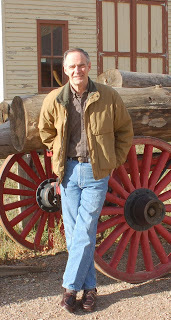 Well, I'm intrigued, and yes, we writers do get to add in our fantasy characters. That's a perk. So, tell me, what was it like going from active duty in the streets of New York to the green hills of Tennessee?
Well, I'm intrigued, and yes, we writers do get to add in our fantasy characters. That's a perk. So, tell me, what was it like going from active duty in the streets of New York to the green hills of Tennessee?In a couple words: CULTURE SHOCK! We had vacationed in the Smoky Mountain region several times and a few years before I thought I might "pull the pin," we decided it would be a nice place to live in retirement. So, we went back during every season to see what sort of weather to expect, and looked for land to purchase. We did our homework, but still, after becoming full-time residents, the big differences between East Tennessee and the Metro NY area became apparent. I could expend many words to explain. And I do that often in the Sam Jenkins stories. Using the Fish-Out-Of-Water angle works well and adds humor in spots where it would be appropriate.
What is one thing you hope I do not tell the readers?
For a guy who spent his entire life governed by tangible evidence and had only bad things to say about people with tunnel vision, he’s a hopeless romantic, constantly looking for a peaceful life.
Thanks for being on Rachelle's Window. I sure do look forward to your upcoming Guest Post about cultural and dialect differences.
Readers can find more about Wayne at:
Wayne's Amazon Author Page

Barnes and Noble Page
Mind Wings Audio Books
Wayne's Website
Published on September 05, 2012 00:00



